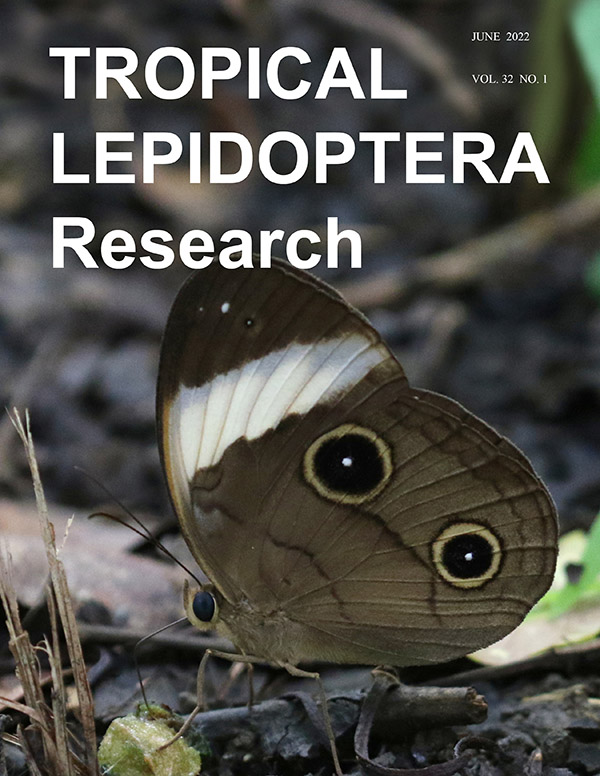Pseudogyris gen. nov. (Lepidoptera: Lycaenidae), a new genus for two rare thecline butterflies from New Guinea, including the description of a new species
Abstract
The lycaenid tribe Ogyrini Waterhouse & Lyell, 1914 is endemic to the Australian Region, where it is restricted to mainland New Guinea and Australia. It currently includes 15 species, all assigned to the genus Ogyris Angas, 1847, and most of these are endemic to Australia. One species, Ogyris meeki (Rothschild, 1900) from mainland New Guinea, has been rarely collected, being previously known only from nine specimens (7 ♂, 2 ♀). However, comparative study of the morphology, including adult wing structure and genitalia, and wing color pattern elements based on examination of existing and additional material (9 ♂, 3 ♀), indicate that O. meeki comprises a complex of two species, and differs fundamentally from Ogyris by 14 unique characters, many of which are considered to be synapomorphies. We therefore propose a new genus, Pseudogyris gen. nov., and a new species to classify this unusual pair of species, which are among the largest and perhaps most spectacular theclines. Unlike Ogyris, Pseudogyris meeki (Rothschild, 1900) comb. nov. and Pseudogyris brandti sp. nov. are restricted to mainland New Guinea (West Papua and Papua of Indonesia, and Papua New Guinea) and the neighboring island of New Ireland (PNG), where they occur in tropical lowland rainforest and lower montane forest. The two species of Pseudogyris are allopatric, being separated by the Central Cordillera, with P. meeki comb. nov. restricted to the southern lowlands and P. brandti sp. nov. to the northern lowlands and New Ireland.
La tribu Ogyrini Waterhouse & Lyell, 1914 de la Lycaenidae es endémica de la región Australiana, donde está restringida a la parte continental de Nueva Guinea y Australia. Actualmente incluye 15 especies del género Ogyris Angas, 1847, y la mayoría de éstas son endémicas de Australia. La especie, Ogyris meeki (Rothschild, 1900) de la parte continental de Nueva Guinea, ha sido recolectada pocas veces, y sólo se conocían nueve especímenes (7 ♂, 2 ♀). Sin embargo, el estudio comparativo de la morfología, incluyendo la estructura del ala y las genitalias de los adultos y los elementos del patrón de color del ala, basados en el examen de material existente y adicional (9 ♂, 3 ♀), indica que O. meeki comprende un complejo de dos especies y difiere fundamentalmente de Ogyris por 14 caracteres únicos, muchos de los cuales se consideran sinapomórficos. Por lo tanto, proponemos el nuevo género Pseudogyris gen. nov. y una nueva especie para dar cabida a este inusual conjunto de especies, las cuales se encuentran entre las más grandes y quizás más espectaculares theclines. A diferencia de Ogyris, Pseudogyris meeki (Rothschild, 1900) comb. nov. y Pseudogyris brandti sp. nov. están restringidas a la parte continental de Nueva Guinea (Papua Occidental y Papua de Indonesia, y Papua Nueva Guinea) y la vecina isla de Nueva Irlanda (PNG), donde se encuentran en la selva tropical de tierras bajas y en la selva montana baja. Las dos especies de Pseudogyris son alopátricas y están separadas por la Cordillera Central, con P. meeki comb. nov. restringida a las tierras bajas del sur y P. brandti sp. nov. a las tierras bajas del norte y Nueva Irlanda.
Downloads
Published
Issue
Section
License
Copyright (c) 2022 Michael F. Braby, Chris J. Müller

This work is licensed under a Creative Commons Attribution-NonCommercial 4.0 International License.

